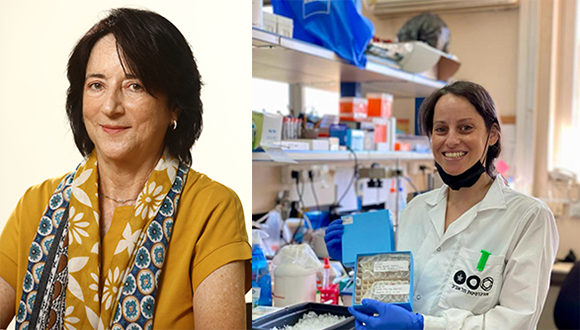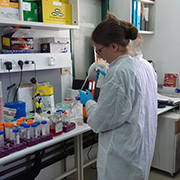When the Cell's Production Manager Goes Off Its Rails
The function of our cells and the production of proteins depend on coordination among countless different molecules. In new research, Prof. Orna Elroy-Stein and her colleagues revealed what happens when one of the main orchestrators of protein production malfunctions
The central dogma of biology explains that genetic information is transcribed from DNA into messenger RNA molecules. These molecules are then translated into proteins by the ribosome. The resulting proteins are responsible for most of the cell's functions, interactions with the environment and organisms, and responses to physiological cues.
However, this seemingly simple process depends on breathtaking coordination among numerous different molecules. Prof. Orna Elroy-Stein’s research is dedicated to understanding the last stage of this complex process: what controls and regulates the translation of RNA into proteins.
Decoding a Rare Brain Disease
In a new study published today in NAR Molecular Medicine (Oxford University Press), Prof. Elroy-Stein and researchers from her lab at the Shmunis School of Biomedicine and Cancer Research and the Sagol School of Neuroscience at Tel Aviv University deciphered what happens when a key regulator of the RNA-to-protein translation process - one of the cell's "production managers" - malfunctions due to a mutation.
The research leading to this discovery focused on understanding a rare neurodegenerative genetic disease called Vanishing White Matter Disease, potentially helping identify new treatment targets. The disease usually appears around the age of three and leads to the patient's death during their teens. Prof. Elroy-Stein's discovery is crucial for understanding basic cell biology and how RNA translation regulation affects multiple cellular functions.
"Vanishing White Matter Disease has been a puzzle for many years. It was known to result from a mutation in a gene called EIF2B, one of the 'master regulators' of the initiation step of RNA translation into proteins by the ribosome - the cell’s protein-producing machine," says Prof. Elroy-Stein. "However, for reasons not yet fully understood, only a few cell types in the body are affected by the mutation, with astrocytes being the most severely impacted. These marvelous star-shaped cells are the primary cell type found in the brain and are responsible for its maintenance."
Breakthrough in Studying Astrocytes
In previous research, Prof. Elroy-Stein and her lab members established the first mouse model to study this disease. Their next challenge was determining how to study the translation process in astrocytes. "The most popular method of studying RNA translation regulation involves isolating ribosomes, especially polysomes - multiple ribosomes connected to the same RNA molecule, indicating active translation. By focusing on polysomes and sequencing the RNA molecules they connect to, we can determine which genetic sequences are actively translated into proteins. Comparing healthy and diseased cells allows us to identify RNA molecules not correctly translated due to mutations.”
However, for a long time, extracting ribosomes from astrocytes was unsuccessful. In significant research published by Prof. Elroy-Stein and her doctoral student, Shir Mandelboum, two years ago, they overcame this challenge. "Once we realized most ribosomes in astrocytes attach to membranes inside the cells, we developed an effective procedure to release them and extract the translated RNA for sequencing."
In the current research, this method enabled Prof. Elroy-Stein, for the first time, to identify genes in diseased astrocytes not effectively translated into proteins in response to cytokines. "We discovered that a mild mutation in a single gene can disrupt the translation regulation of about 30% of genes expressed in astrocytes, many related to cell metabolism and energy production. This provides directions for possible therapeutic targets and hints at why astrocytes, with high energy demands crucial for maintaining brain homeostasis, are primarily affected by the mutation."





